Let me guess: you’ve set your sights on a grand Colombia trip - excited to galavant in the rainforest, sip the coffee, and experience the lively culture.
You’ll probably be flying into one of the busy cities to start, but perhaps you don’t really know what there is to do in Bogota, for example, or how many days to spend in Medellin.
I was in the same position when planning my escape to Colombia. I decided to skip Bogota (for reasons I’ll explain) and surprisingly ended up spending more than a month in Medellin.
Thus, I’ve consolidated the best things to do in Medellin so you can be ready before you enter the belly of the beast.
When you arrive in Medellin, you are walking into the (intense, but exciting) belly of the beast.
Of course, I know that not everyone has unlimited time to spend waltzing around, and you probably want to see plenty of other places in Colombia.
So, how many days should you spend in Medellin?
How Many Days in Medellin?
The short answer is that 3 days should be enough time to see the main sights of Medellin if you don’t have a lot of time.
However, my truest advice when planning your Colombia trip is that you should look at the attractions that interest you first, and then decide how many days you need - not the other way around.
That’s why I am giving you 4 useful pieces of information that you will need to make your decision:
A 3-day Medellin itinerary that will allow you to experience the essence of the “City of Eternal Spring.”
Options for popular day and weekend trips from Medellin.
Tips you should definitely know before traveling in Medellin.
My recommendations for where else to go in Colombia after Medellin.
You are going to be thrust into action in Medellin - the city that never sleeps…
3 Days in Medellin Itinerary
While Medellin has 16 comunas, or neighborhoods, the majority of the tourist attractions are in El Poblado and Centro (downtown), as well as the artistic Comuna 13.
Cost: Budget to Midrange
This itinerary is written from the perspective of a budget to midrange traveler. If you’re like me, I prefer to save on accommodations and shopping, but splurge more on attractions and experiences.
Traveler type: Any
My blog focuses on solo backpackers, but couples and groups - in fact, every type of traveler - will also benefit from this specific itinerary.
Days: 3
You can spend 3 full days in Medellin, but don’t miss my recommendations for what else to see nearby if you have extra time in the department of Antioquia.
Interests: Diverse
History, nature, hiking, food, art, nightlife, museums, and more.
Transportation: Walk, Metro, Taxi, Cable Car, Uber (sort of)
The paisas of Medellin are extremely proud of their Metro train system, and the metro is the best way to get around to avoid the constant traffic.
As far as Uber, it is technically illegal in Colombia, but yes you can still use it (I did). Just be aware you may be asked to sit in the front seat to be more discreet. In the “Tips” section of this article, I provide you with alternative ride-share apps.
Day 1: Downtown Medellin and El Poblado
Free walking tour in Downtown Medellin
The free walking tour by Real City Tours was my quintessential introduction to Medellin. Led by a fantastic and energetic guide (thanks Herman!), the tour lasted almost 4 hours and gave a valuable perspective of not only Medellin’s history but also the whole of Colombia’s, from the first-hand experience of locals that lived through its dark past and bright transformation.
This tour will guide you through Centro Historico, provide you with recommendations for what else to see on your trip, and answer all those questions you are too afraid to ask - all in English.
Eat the Menu del Dia
While ‘gringo’ hoods like El Poblado and Laureles entice expatriates with food from around the world, Centro is the perfect place to taste the menu del dia (lunch of the day).
Get this: your entire meal will be about $2-3 USD, often including soup, salad, an entree of meat/rice/beans, juice, an arepa, and maybe plantains.
The menu of the day can be found in small hole-in-the-wall shops. Don’t be shy; give a chance to the authentic mom-and-pop shops that cook with love. You’re in Colombia, after all!
visit a Museum
After a hearty lunch in Centro, choose one of the following museums to spend an hour or two before they close around sunset. Some are closed on Sunday or Monday, so double-check the hours online before you go. If you have an extra day, I actually recommend visiting all of them as they all were very different.
Museo de Antioquia (Centro) - You’ll pass by the exterior of Medellin’s flagship museum on your walking tour, but head inside to find a grand collection of works by Fernando Botero, the noted sculptor of Botero Plaza. While it wasn’t my favorite museum on this list (I found the other 3 to be more thought-provoking), the Antioquia Museum is conveniently located downtown so it doesn’t hurt to stop by if you’re curious about art.
Casa de la Memoria (Centro) - Walk or take a taxi to the Memory House Museum to learn about the true stories of Medellin’s struggle with war and narcotrafficking in recent decades. The small museum houses interesting accounts from locals through digital displays and short films, for a chance to understand the unadulterated backstory of Medellin. Admission is free.
Museo de Arte Moderno (El Poblado) - You’re probably staying in El Poblado, so head south to the Museum of Modern Art if you’re curious about the abstract and extraordinary. Highlights of the four-story museum included a gallery of thought-provoking performance art and a pitch-black room of sound waves.
El Castillo Museo y Jardines (El Poblado) - Who knew there was a castle in Medellin?! This gothic relic in El Poblado takes you on a one-hour guided group tour inside the Medieval museum, leaving you afterward to explore the gorgeous gardens on your own. The tour is given in Spanish, but you can inquire about English tours or take a private tour.
Go out in El Poblado
Time for dancing and drinks if you’re up for it! I was thoroughly impressed by the neon lights and diverse sounds of El Poblado, the chicest sector in the city.
But first, dinner. This is where your ‘midrange’ budget comes in - but paying a little extra is absolutely worth the quality of food in El Poblado.
The two main hot spots in El Poblado for a night out are Parque Lleras and Provenza street, both within a few blocks of each other.
I ate at 37 Park Restaurante Bar with my partner in crime, Lindsay. We gorged on the phenomenal charcuterie board and enjoyed the lime green ambiance of the ultra-inviting lighted terrace. You’ll find craft cocktails in unique vessels (mine was a doggo).
What about the nightclubs, las discotecas? In this hip neighborhood, you have all types of music from electronic and hip hop to salsa and bachata.
Looking for electronic music? Try Calle 9+1, Salon Amador or PKR.
Latin music lovers, check out La Oculta or Gusto.
Then again, the genres depend on what night of the week it is, so you’ll probably hear the clubs play a range of dance music. Remember… Colombians love to dance!
You don’t need to get dressed up to the nines to go out, but you will definitely see style in El Poblado. Just wear comfortable shoes and read my section on “What to Wear” below if you are unsure about what to pack for Medellin.
Day 2: Comuna 13 & Laureles
After a big night out in El Poblado, you’ll want to sleep in, so I recommend reserving your Comuna 13 tour for the afternoon.
Afterward, you’ll stop by the neighborhood of Laureles, where you have the option to eat dinner or dance in another poppin’ expat neighborhood.
3 days in Medellin will give you enough time to check out more neighborhoods, like the rising Comuna 13.
Street Food for Brunch
Your visit to Medellin is not complete without eating from a street vendor (or five). Arepas, empanadas, or bunuelos with a cup of coffee constitute your typical fried-and-filling Colombian breakfast - or any meal, really.
Arepas are soft cornmeal cakes commonly stuffed with cheese, eggs, banana, or meat. Just writing about them makes my mouth water right now!
Empanadas are similar to arepas with a corn crust, but the filling is often mixed with potatoes and seasonings, and they come extra crunchy in a half moon shape. The vendors always have delicious sweet or spicy sauces to complement, making empanadas my favorite street food.
Bunuelos are like donut holes without all the sugar. Honestly, they taste pretty plain to me (probably the fault of my oversaturated, sugar-craving American blood), but you have to try them as they cost just a few cents.
Graffiti Tour in Comuna 13
Today, you’ll witness the uprising of a creative community known as Comuna 13.
Once the most dangerous district in Medellin, Comuna 13 has transformed into a cultural hub for artists. Muralists, beatmakers, dancers, and other free spirits flock to the district for inspiration and to showcase their work to tourists and locals.
Comuna 13 has evolved from its experience of living through Medellin’s difficult history by sharing the perspectives and stories from the neighborhood. These stories are shared through art, word of mouth, or tours given by locals. Together we can carve the new culture of creation - not destruction - into Medellin’s brick walls.
These days, Comuna 13 is completely safe to visit. Taking a graffiti tour hosted by comuna locals is now one of the most popular activities for travelers to behold evidence of the city’s transformation.
On these tours, you’ll learn about the significance behind popular art pieces, ride the stairways to heaven (the iconic escalators that made everyone’s lives easier in this steep town), and taste traditional snacks like passionfruit ice cream.
Arguably the most groundbreaking artist that helped shape the region is Chota 13, creator of the street works below.
Spot Street Performers at Estadio Skate Park
You won’t find it on other itineraries, but here’s a tip… Around sunset, Skate Park Estadio starts to fill up with street performers, circus clowns, and skaters practicing their craft. I know this because I enjoyed practicing my hula hoop with other dancers there.
When taking the Metro to Laureles from Comuna 13, you’ll get off at Estadio station, and you can’t miss the skate park right across the street. Stop by to meet friends or peruse the local scene, before walking down the main boulevard of Laureles, Carrera 70.
This performance in Laureles during theater week knocked my socks off with laughter. Even if I didn’t understand every single word in Spanish, it was worth checking out a local show and discovering Medellin’s art scene.
Dine and Dance in Laureles
Your day clothes will be just fine to dine in Laureles - Estadio, as this part of the city is more casual than El Poblado, but still receives plenty of action from both tourists and locals.
On Carrera 70 you have a variety of dining options from Colombian to Venezuelan fare, pizza and pasta, taquerias, burgers, etc.
If you need a break from the fried and sweet foods from earlier in the day, try the fresh cuisine from Naturalia Cafe, a cute and cozy restaurant with options for vegans and carnivores alike.
Don’t ask me what any of these things are… the point is it was all delicious and almost put me in a food coma.
After dinner, mosey along the row of boisterous no-cover bars if you feel like dancing off that meal to blasting Latin music (with the bars often competing with one another), and grab drinks at a much cheaper cost than in El Poblado.
Day 3: Arvi National Park
Today you will experience top views of Medellin at Parque Arvi, a network of nature trails that runs through a national park.
Here, you’ll get a chance to see native and non-native plants of Colombia, spot elusive birds, and escape the busy city energy.
The park is free to enter; you just have to pay for transportation. Parque Arvi is open every day except Monday.
These trails are easy and accessible for all ages, so you can enjoy the chill outing even if you had a big night before. The thick forest is shaded by nature’s canopy, and the climate is slightly cooler in the mountains, so you can stroll peacefully even when it’s scorching hot down in Medellin.
Additionally, you won’t need hiking boots, but you should wear athletic shoes or sneakers.
Ride the Cable Car from Medellin to Parque Arvi
Forest green rolling hills and acres of ochre-colored neighborhoods surround you on your ascension up into the skies.
On Medellin’s cable car, you’ll never forget the extraordinary view of the city’s beautiful chaos engulfed by earth’s overgrown hand.
To take the cable car from Medellin to Parque Arvi, you’ll take the metro to the K line station. From here, you take the cable car from K to L station, then a second cable car from L that drops you off right at Parque Arvi. Riding the cable cars takes 30 minutes from station K.
Hike in Parque Arvi
Once arriving in Parque Arvi, you’ll find options for food, coffee, or using the bathrooms.
Getting to the hiking trails can be confusing - that’s why I downloaded offline maps on maps.me before arriving to the park, where there is little service.
This map at the visitor’s center wasn’t very helpful, which is why I suggest you download the app maps.me beforehand to check out all the trails.
The trail closest to the entrance is La Flora Trail, if you exit the tourism office area and start walking right down the main road. After walking for 10 minutes you’ll find an entrance to the forest on your left hand side.
Once you embark on your adventure, you are free to follow your heart’s content! You don’t have to strictly follow one trail as they are all interwoven together.
We ended up hiking south until I reached the “Biodiverse trail”. We avoided trails that were muddy and quenched our curiosities by roaming spontaneously. You can always hike back up the main road for a direct route back.
The park is open until 6 PM, but you may want to start heading back sooner to make sure you get on the cable car before it closes (and there will likely be a line of people waiting).
Day and Weekend Trips from Medellin
Do you have more days to spend in Medellin? If so, I highly suggest visiting some of the smaller Colombian towns near the Medellin area while you are so close.
Guatapé
The most popular outing from Medellin is Guatapé - but it’s not the only option you have for a scenic view of Colombia’s pueblos, and it doesn’t have to only be a day trip.
To me, Guatapé seemed like the Disneyland of Antioquia, in the best way possible. It’s a small town, but every single house and property is painted with vibrant colors, and the streets were made for villagers and tuktuks, not cars.
Climbing the colossal rock, Piedra del Penol, is the essential pilgrimage of visitors to Guatapé. After 740 steps, you’ll be rewarded with incredible views of this lagoon-laden land.
San Rafael
Further down the same road east of Guatapé lies San Rafael, 45 minutes away. You can stay overnight in Guatapé and take the same bus line to San Rafael.
Completely different than Guatapé, we enjoyed San Rafael even more because we saw no other tourists there.
Come to San Rafael if your spirit longs for crystal clear swimming holes, nature trails, and wildlife. Staying in the secluded village will give you an authentic Colombian experience while staying in an eco-lodge will feel like a nature retreat.
To return, you’ll take just one bus all the way to Medellin.
Jardin
Another fantastic excursion from Medellin located in a completely different part of Antioquia is Jardin, an intimate village that ended up being my favorite town in all of Colombia.
Jardin is about 4 hours bus ride from Medellin, so you’ll definitely stay overnight. I even ended up staying 4 days. For the complete guide to Jardin, read my article on the most wonderful things to do - your spirit will thank you.
Tour a Coffee Farm
If you don’t have a chance to visit the Coffee Region, you can simply take a day trip from Medellin. Tours include local guides, transportation, entrance to the plantations, snacks, and of course - delicious coffee tasting.
Where to Stay in Medellin?
When planning my days in Medellin, I wanted to stay in different parts of the city to get a well-rounded experience. Here are the different hostels and hotels we stayed in Medellin:
El Poblado
Budget Hostel: Black Sheep Hostel Medellin. If you want to meet other travelers in Medellin, stay near Poblado, and have a bunk bed for less than $10/night, The Black Sheep is the hostel for you. Two lounge areas always have people coming and going from all over the world, and the nightlife is just about a 15-minute walk away.
Mid - Luxury Hotel: The Somos Hotel. With rates of $90/night, The Somos was a splurge for me, but made possible with a group. Certainly the best hotel I stayed in within Colombia, the modern rooms were located right in the center of the action of El Poblado. Gourmet breakfast was included, and the rooftop bar comes alive at night.
Laureles
Budget Hotel: Hotel Medellin Gold. A clean, safe, and wonderful option in Laureles that includes breakfast from an adjacent restaurant. We booked a triple room for just $30 USD.
You can browse more dorms or private rooms on Hostelworld; I like to check reviews before I book.
Where to Go After Medellin?
I am the biggest fan of slowww travel, getting to soak in the most of a location without feeling rushed.
That being said, when deciding how many days in Medellin, it all depends on what type of travel matters most to your Colombian itinerary (visiting a coffee farm, going to salsa classes, or lounging on a beach in the Caribbean?)
It would be difficult to visit all these regions unless you have at least a few weeks, so here are my thoughts on each location to help make your decision. And don’t worry, there’s not one correct itinerary.
Colombia’s Coffee triangle
Colombia’s Coffee Triangle is your forested getaway to nature, wildlife, and rustic villages.
After backpacking 2 months in Colombia, my favorite region was the coffee triangle, or “zona cafetera”.
Even if you aren’t a coffee connoisseur, the country’s central region brims with charismatic towns, native flora and fauna, friendly villagers, charming churches, and stunning landscapes.
Riding on buses through the mountains, my first stop was Jardin - as mentioned before - where I fell in love. Afterward, I headed to Manizales and then Salento, where I hiked the UNESCO World Heritage Site known as the Cocora Valley. (All of the links given will take you to my travel guides.)
Seriously, don’t miss the enchanting coffee triangle. I’ve written the ultimate guide to Colombia’s coffee region and the many quirky cowboy towns within it.
Cartagena & the Caribbean
Beach vibes, fresh seafood, and an explosion of culture: Cartagena has risen to become one of the top destinations in the Caribbean.
If you’re an art, food, history, and ocean lover, make the most of your time with my perfect 3-day itinerary of Cartagena - including a much-needed rest on the Rosario Islands.
Cali
Below the coffee region, Colombia’s capital of salsa dancing is often the next stop for many backpackers. This hot city sees less “mainstream” tourism and caters more to travelers feeling adventurous.
Full disclosure: I skipped Cali on my itinerary as I didn’t have the urge to head so far down south and chose to spend more days in Medellin area. While it’s not considered one of the safest cities in Colombia, I met several travelers who enjoyed their time in Cali.
Bogota
Bogota is another city that I omitted on my Colombia itinerary, as I prefer the smaller towns to the urban jungle, and felt like I had plenty of big city life in Medellin. Bogota is also colder year-round, and I didn’t have warm clothes for the mountains.
However, Bogota is rich with history, culture, and nightlife, so you will find an array of opportunities to learn and play in Colombia’s capital. It’s also a great launching pad to take more day trips to the eastern parts of Colombia.
“I reject the war. My fight is not this.” A poignant quote from the Casa de la Memoria (Memory House Museum).
Is Medellin Safe?
Once considered a violent and dangerous city, Medellin has completely transformed from its corrupt narcotrafficking days.
After spending more than a month in the Medellin area as a solo female traveler (who stood out with blonde hair and blue eyes), I can tell you that Medellin feels totally safe to visit.
Different areas have different levels of crime. For example, walking in El Poblado at night is fine, but you won’t want to be caught in Centro after dark.
The most common crimes you will want to watch out for involve theft. Don’t hold out your cell phone on the street without being vigilant, or leave it in an obvious place like your back pocket, any time of the day. I did hear from other travelers about getting their phones stolen in Colombia on public transportation and in busy areas, so it is common when you look like an easy target.
Additionally, there are some true rumors about Medellin, surrounding drugs and prostitution. On a night out in Parque Lleras, you can encounter both industries.
Be mindful of your money, and be wary that there are many people in need who will try to overcharge or potentially scam you, as in many major cities.
Don't forget travel insurance!
Want peace of mind when spending your days in Medellin?
Travel / medical insurance is worth it in Colombia.
You’ll be covered for theft, accidents, and changes in travel plans, so you can enjoy your trip worry-free.
I use SafetyWing Travel Insurance when traveling because it’s cheap and so easy to sign up for. Just enter the dates you want coverage, and you will be prepared in minutes.
Tips for Traveling in Medellin
Avoid Pablo Escobar tours & activities
The glorification of a violent kingpin is a sore spot for many Colombians who constantly witnessed bloodshed at the hands of Pablo Escobar back in the day.
Families still grieve loved ones and have suffered greatly in the last couple of decades.
Many Colombians despise the fact that all the beautiful aspects of their country and culture can often be outshined by the actions of one drug lord. Aloof English-speaking tourists that simply watched Netflix now flock to Medellin to buy Pablo Escobar T-shirts. It would be like going to Berlin and buying a Hitler T-Shirt.
Yes, it is true that you may encounter a few locals in some barrios who are happy that they have a free home provided by Pablo Escobar. I did meet some.
But what I can tell you is that you can still learn about the transformation of Medellin and the real effects of its history, both through the museums as well as the walking tour, without supporting the tours that are run by Escobar’s successors solely to “honor” his destructive and tragic legacy.
Rideshare Apps and Getting Around
Is there Uber in Medellin? Well, technically yes - and I used it a lot. But although it is available, ride-share apps are illegal in Colombia. Taxis are legal and safe if the conductor uses a meter.
The metro system is most useful due to its cheap price and avoiding Medellin traffic, which is prevalent at all times of the day. However, if you choose to use Uber, just know that the driver may ask you to sit in the front seat or get picked up in a more secluded area.
When Uber is too busy, there are other apps you can use that saved me several times when I just couldn’t get a ride and/or didn’t want to walk alone at night.
Cabify is an app that calls drivers to you, but you pay in cash after the ride. It is less convenient but slightly cheaper than Uber.
InDriver is another app popular with locals because you choose your own fare. You will probably have to wait longer until a driver accepts your cash fare, but it means you can get a ride for half price if you are smart with it.
Tipping
Coming from the United States, I am used to tipping 20% everywhere I go. However, tipping is less common in Colombia, and it’s important that you stick to the country’s customs in order to decrease tourist inflation.
Generally, you can tip 10% to restaurants, drivers, and other service workers.
Cash and ATMs
Speaking of money, you will need cash at all times in Colombia. Most vendors, even store-front businesses, only accept cash.
For all your credit transactions during your trip, however, make sure you use a credit card with no foreign transaction fees. I linked to Chase because they give me so many rewards I am almost always booking flights for free.
What to Wear in Medellin
When packing for Medellin, there are three things you should know:
- It can suddenly rain hard at any time, often in the afternoons, even on an otherwise sunny day. If the forecast calls for thunderstorms, bring a small travel umbrella with you that you can clip on to your bag, and you won’t have to worry about an abrupt downpour ruining your plans.
- Everyone wears closed-toed-shoes in Medellin, probably due to the unpredictability of the streets.
- Dress is casual-chic, and often revealing. Since it is usually warm in the “City of Eternal Spring”, don’t be afraid to show skin when heading out at night. During the day, most people wear athletic brands or streetwear (knock-off brands are super popular in Medellin).
Before you pack, take a glance at my Ultimate Packing List for Colombia. I’ve included specific examples of what to wear in Medellin and Colombia’s cities, as well as essential gear you’ll want for the other regions.
Do I need Spanish for Medellin?
Do you need to be fluent in Spanish to visit in Medellin? No, but you will want to know basic terminology, particularly the following:
Basic Greetings: ¿Cómo estás? No, gracias… Hasta luego!
Numbers: for all your purchases
Directions: how to ask for or give directions to your taxi driver
The cool part is that you can filter by country/accent if you only want teachers from Colombia, and it takes the nerves away concerning speaking. I’ve tried other programs like Duolingo or Rosetta Stone, but chatting with real people on Italki is my absolute favorite way to learn fast.
What to read in Medellin?
When visiting a hostel, I always rummage through the old book bins to see what other travelers have left. In Colombia, I found a copy of Pablo Escobar: My Father, written by the drug kingpin’s son Juan Pablo Escobar.
Although not the most lighthearted read, learning about Medellin’s background of Medellin is something we should lean into, not look away from. The memoir gave a firsthand account of the stories that crumbled and remolded Medellin, and it also gave me a chance to practice my Spanish, although you can read the English version as well.
Conclusion: 3 Days in Medellin for the Spirit
Whether you’re alone or with friends, you can connect with the soul of Medellin in just 3 days. I’m all about traveling as a spiritual experience, which means I encourage you to go beyond El Poblado and into the heart of Medellin’s art scene, unassuming restaurants, emotional history centers, less-walked trails, and sky-soaring cable cars.
If you have more than 3 days in Medellin, don’t be afraid to hop on a bus to explore another part of Antioquia. It’s often the spontaneous adventures that end up being the most rewarding.
hi wolfette, i’m molly
Travel is a spiritual experience for me, especially when adventuring solo.
After visiting 6 continents on my own, I’ve dedicated this project to assisting other Lone Wolfettes on their journeys.
I hope my travel guides help you find the same joy, connection, and empowerment as exploring our planet has given me.
Related Articles
This article may contain affiliate links. As an Amazon Associate, I earn a small commission from qualifying purchases, at no additional cost to you.
However, I only recommend products or services that I find valuable for myself and other Lone Wolfettes along our travel journeys. Thank you for supporting this blog!


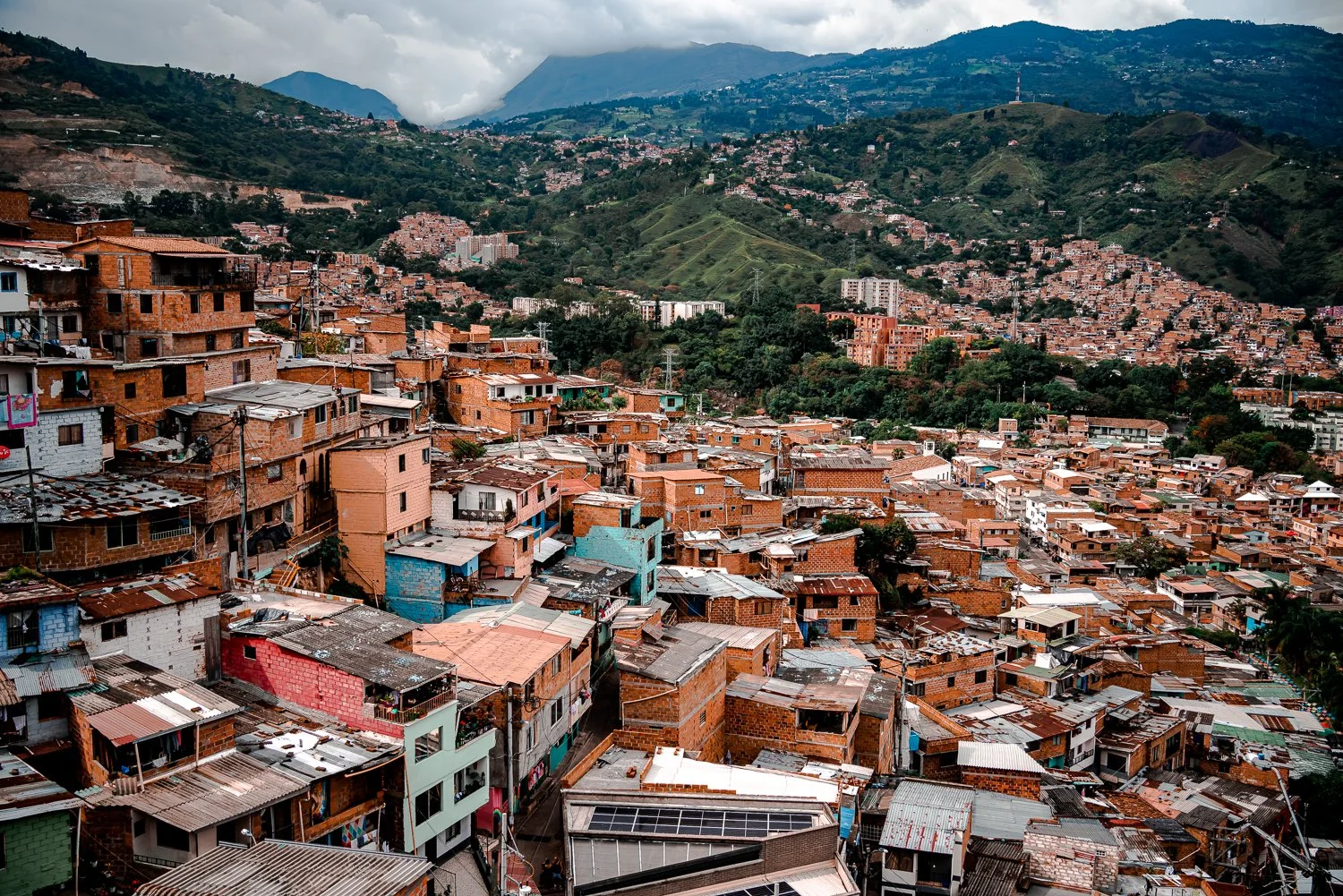

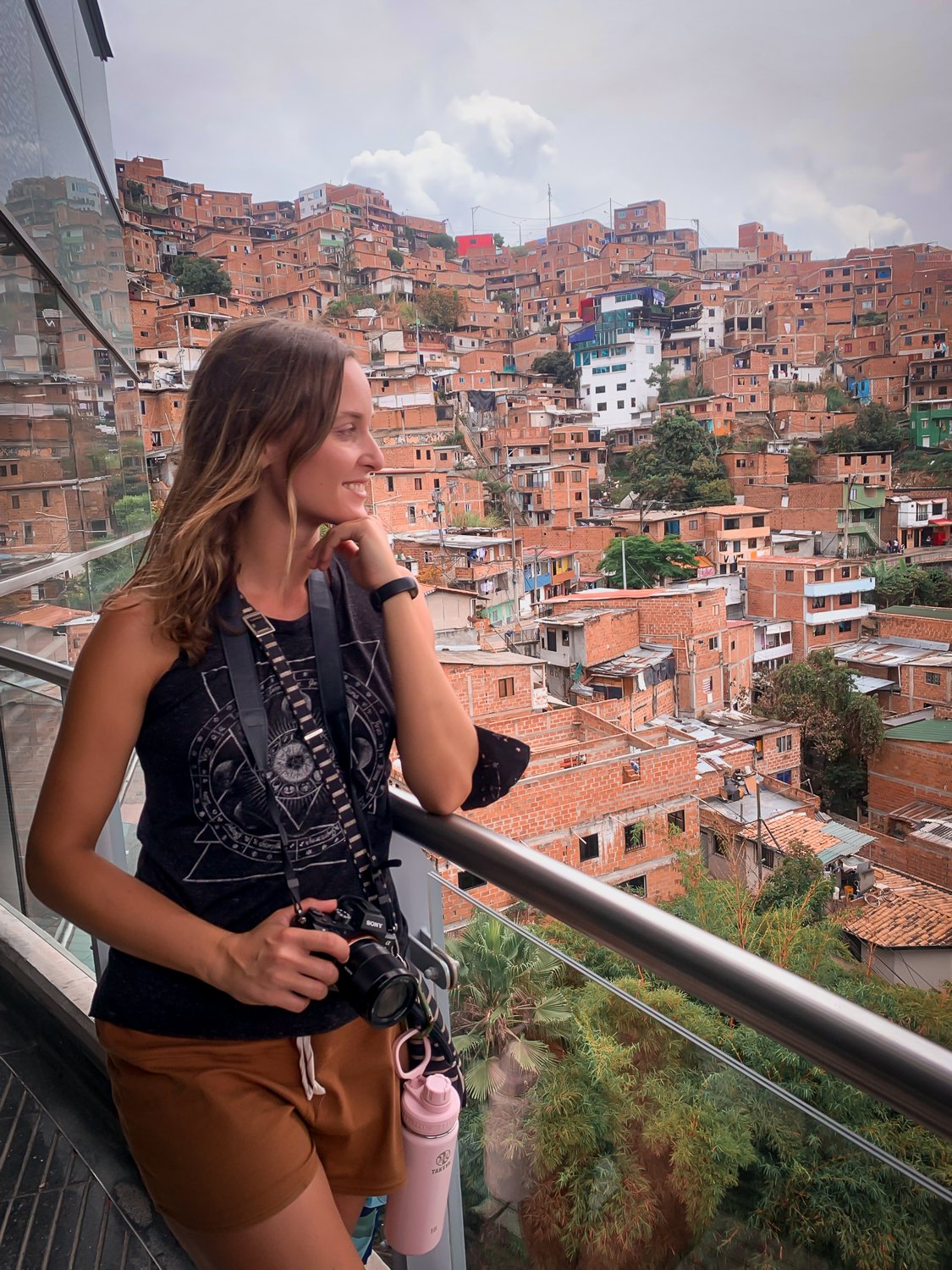
































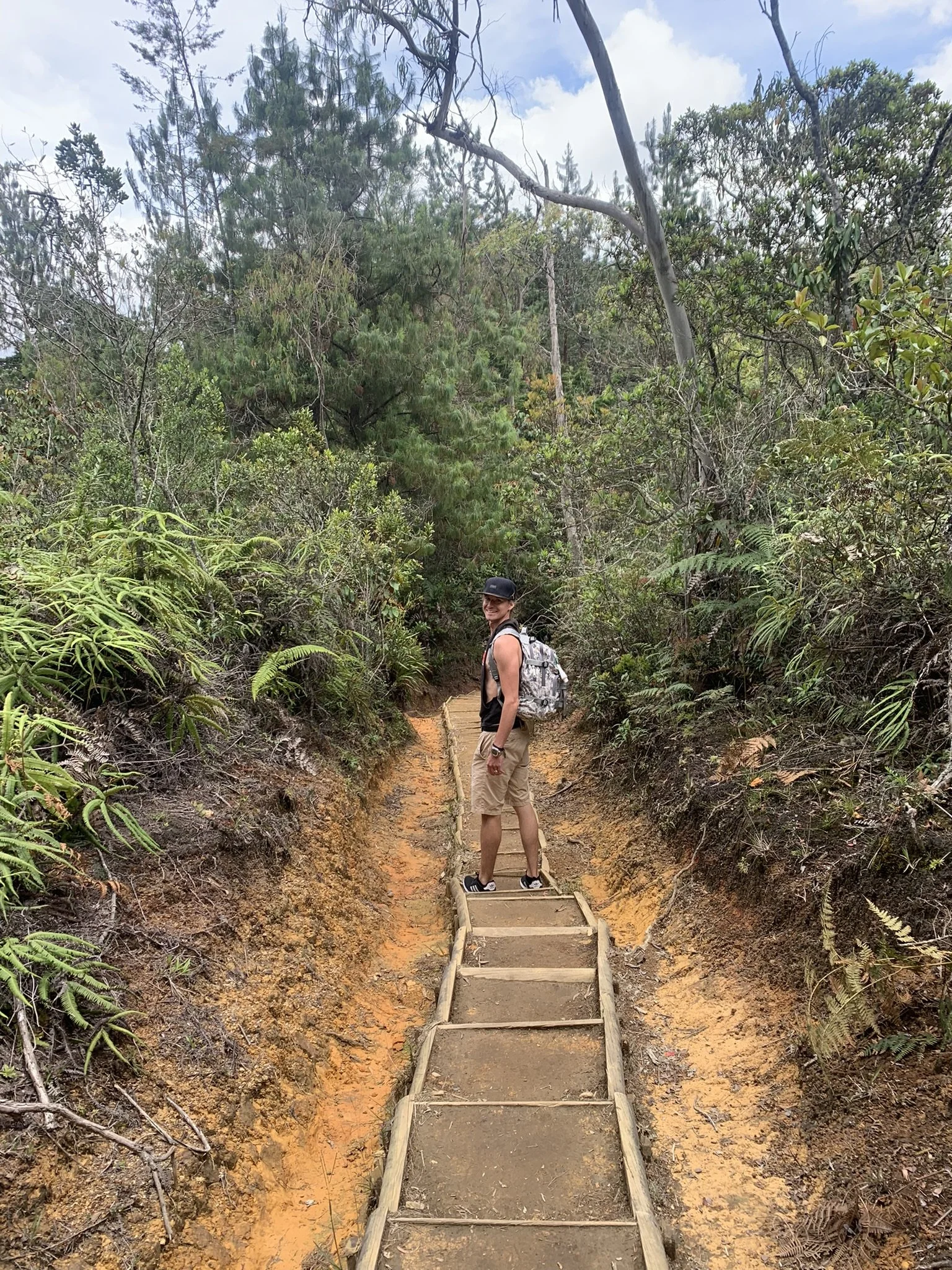
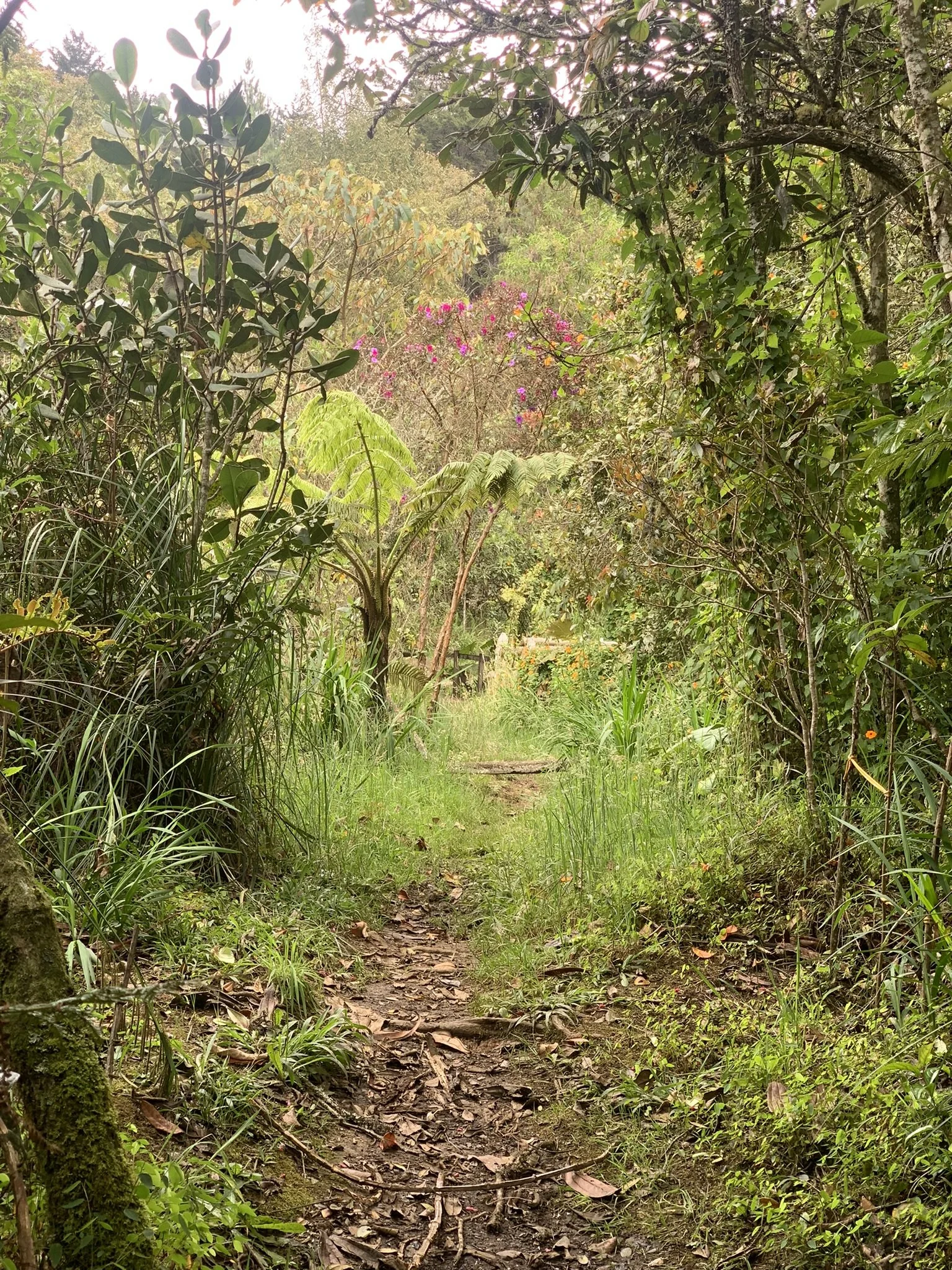














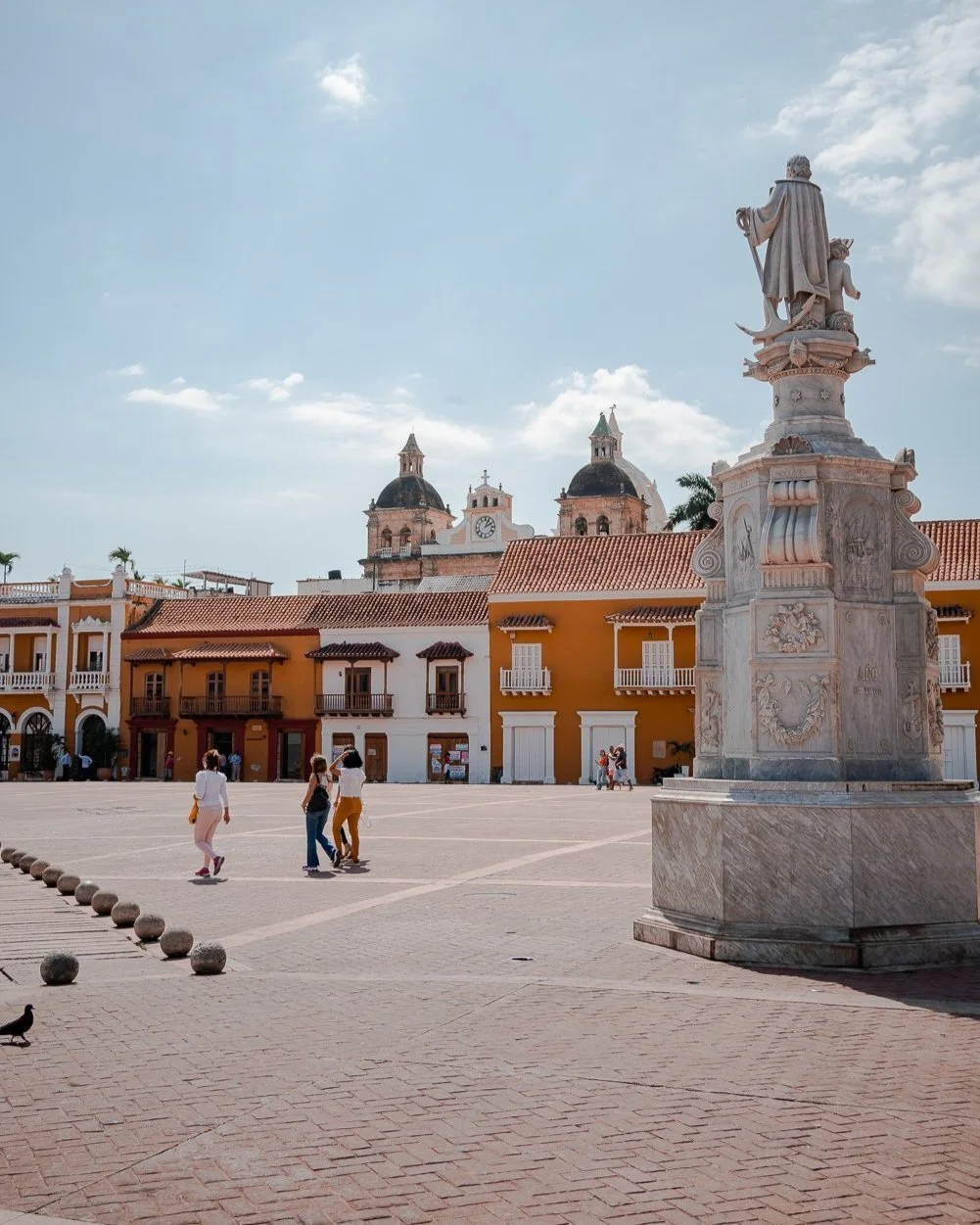








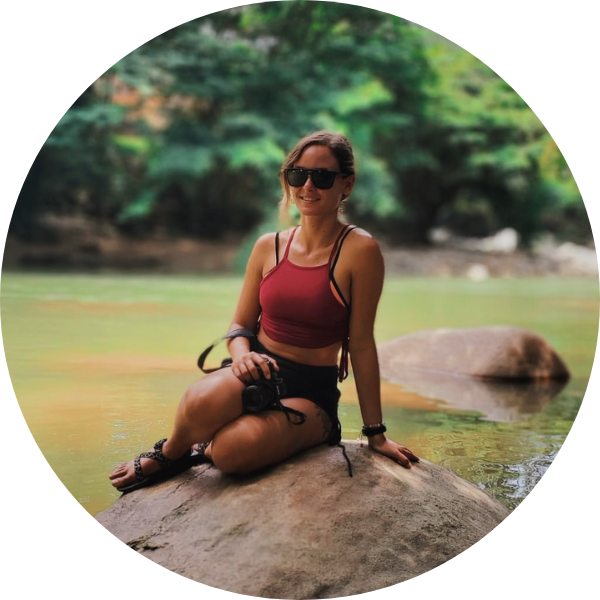











Waterfalls, hiking trails, and sanctuaries - browse the top local spots and best things to do in my guide to Antioquia's forested village.